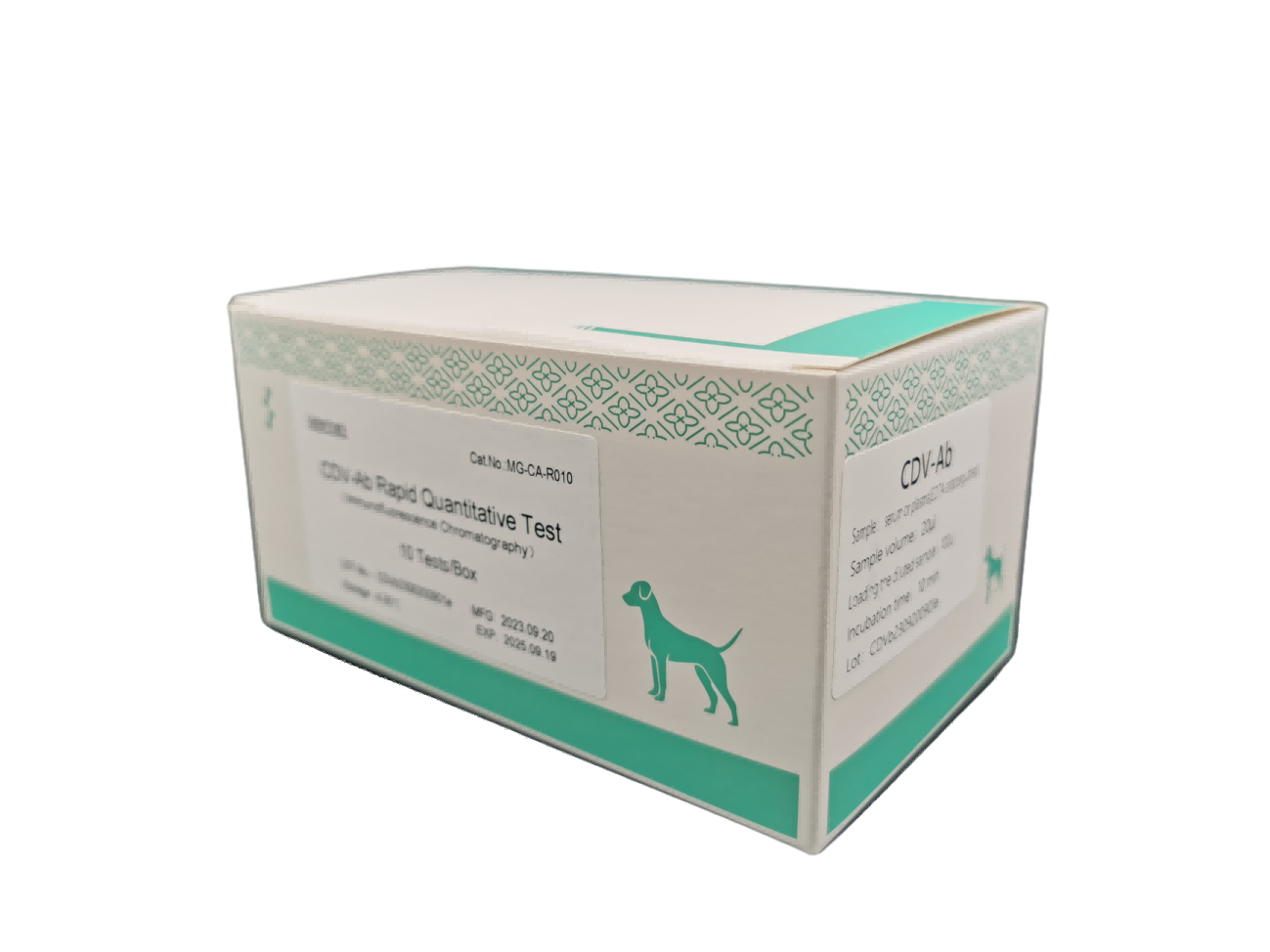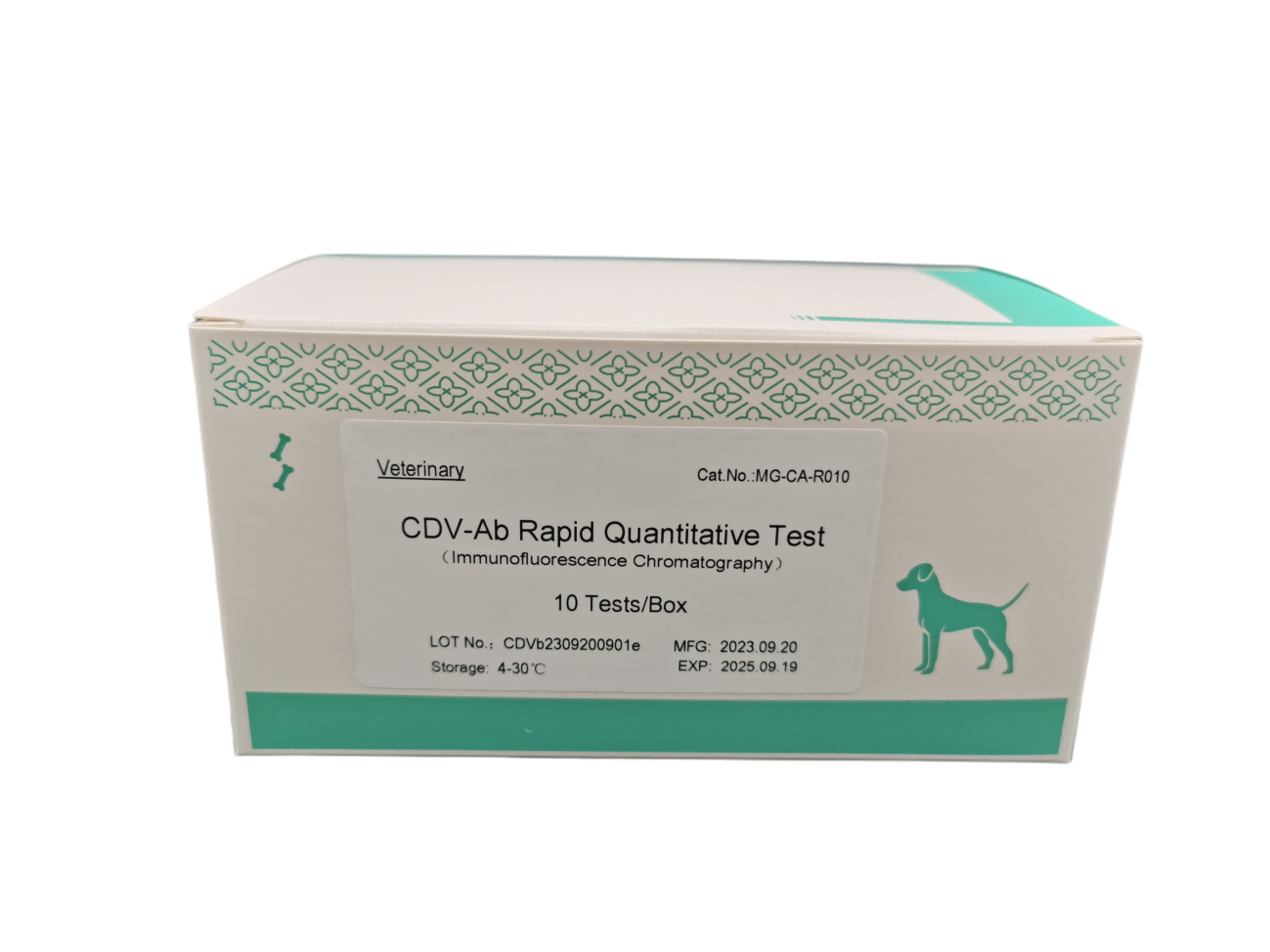



Key attributes

SPECIFICATION
Package Size: 10 Tests/Box
Catalog Number: MG-CA-R014
The cPL test is a fluorescence immunoassay designed for the quantitative determination of pancreatic lipase concentration in canine serum or plasma. It is used to aid in the diagnosis and monitoring of pancreatic lipase levels in dogs.
For in vitro diagnostic use only. Professional use only.
This test utilizes a quantitative double-antibody sandwich fluorescence immunoassay technique.
The fluorescent signal intensity corresponds to the amount of cPL captured. Results are expressed in ng/ml.
| Contents | Quantity |
|---|---|
| Individual Sealed Pouches | 10 |
| - Test Device | Per pouch |
| - Desiccant Pouch | Per pouch |
| ID Chip | 1 |
| Instructions for Use | 1 |
| cPL Sample Buffer Tubes | 10 |
| Pipette Tips | 10 |
Materials Required but Not Provided:
Immunofluorescence Analyzer
Timer
Pipette
Centrifuge
Store the test kit at 4–30℃ until the expiration date.
Perform the test at 18–28℃ after opening the Test Device.
Once the pouch is opened, the test should be performed within 30 minutes.
The test can be conducted using serum or plasma (EDTA anticoagulant recommended).
Separate serum or plasma from blood within 3 hours of collection. If the specimen is severely hemolyzed, obtain a new specimen.
Perform the test immediately after specimen collection. If the test cannot be performed within 3 hours, store the specimen at 2–8℃ for up to 72 hours or below -20℃ for long-term storage.
Before testing, bring all materials to room temperature. Frozen specimens must be completely thawed and mixed well before use. Avoid repeated freezing and thawing. Only clear, non-hemolyzed specimens should be tested.
Refer to the Immunofluorescence Analyzer Operation Manual for detailed instructions.
Place the Test Device on a clean, level surface.
Insert the ID Chip into the analyzer and click "Read ID Chip." Ensure the Test Device lot number matches the ID Chip number.
Pipette 50 μl of the prepared sample into the cPL Sample Buffer and mix gently.
Pipette 100 μl of the mixed sample into the sample well (S) on the Test Device, avoiding bubbles.
Select the Test Mode:
Standard Test: Insert the Test Device into the analyzer immediately, select "Serum/Plasma," and start the test. The meter will automatically display the result.
Quick Test: Let the Test Device sit at room temperature for 10 minutes, then insert it into the analyzer, select "Serum/Plasma," and start the test. The meter will display the result automatically.
Results will be shown on the screen and printed either automatically or by clicking "Print."
Each cPL Rapid Quantitative Test includes an internal control for routine quality control. If an invalid result occurs, the analyzer will display an error message, prompting a retest.
Detection Range: 50 ~ 3200 ng/ml
Reference Ranges:
| Result (ng/ml) | Risk Level |
|---|---|
| ≤ 100 | Low risk |
| 100 – 300 | Medium risk |
| > 300 | High risk |
Each laboratory should establish its own reference range based on the population being tested.
For in vitro diagnostic use only.
Inspect the packaging and labels before use. Do not use if the pouch is damaged, improperly sealed, or if the vial is damaged or leaking.
Do not use the test device beyond its expiration date.
Use one pipette tip per specimen to avoid cross-contamination.
Technical or procedural errors, along with unlisted substances in the blood, may interfere with the test and result in erroneous outcomes.
